Shopee vs Shopify: Which Platform Will Skyrocket Your Sales in 2025

Compare Shopee vs Shopify in 2025 to find the best platform for your business, explore features, pricing, and growth opportunities for sellers.
Choosing where to sell your products online can make or break your business. With over 4.82 million stores using Shopify and Shopee processing 3.1 billion orders in a single quarter, both platforms are proving their worth in different ways. However, electing the wrong platform means wasting time, money, and growth potential on features that don't align with your business objectives.
This guide breaks down exactly how Shopify and Shopee differ, what each platform offers, and which one fits your specific needs. You'll walk away knowing whether you need an independent online store, a marketplace presence, or both.
Key Takeaways
- Shopify is ideal for businesses prioritizing brand control, global reach, and long-term customer relationships, while Shopee suits sellers seeking fast market access and low upfront costs in Southeast Asia and key regions.
- Shopify charges a predictable subscription fee, whereas Shopee employs a pay-per-sale model, resulting in distinct cost and risk structures.
- Shopify offers full customization, marketing tools, and integrations, while Shopee provides built-in traffic, promotions, and simplified operations.
- Using both platforms enables sellers to validate products on Shopee and build a scalable, branded store on Shopify, utilizing tools like StarApps Studio.
Overview of Shopee and Shopify
When considering an online sales platform, it is important to understand the fundamental differences between Shopify and Shopee, as they cater to different business needs and strategies.
Shopify

Shopify is an e-commerce platform that enables businesses to create and manage a fully customized online store. It provides a personalized website with a custom domain, full control over branding, and complete ownership of customer data. This level of control enables merchants to create a customized shopping experience that reflects their brand identity. Leading brands such as Gymshark, Allbirds, and Raycon use Shopify to deliver consistent, high-quality online experiences.
Shopee

In contrast, Shopee is an online marketplace that connects sellers with a broad, active customer base. Founded in 2015 by Singapore-based Sea Limited, Shopee has grown to become Southeast Asia’s largest e-commerce platform, attracting over 500 million monthly visits.
Sellers do not build a separate website; instead, products are listed within Shopee’s marketplace. The platform facilitates transactions through Shopee Guarantee, provides logistics and shipping support, and drives traffic with built-in promotional tools. Its reach extends across Southeast Asia, Taiwan, Brazil, and Mexico, making it an attractive option for sellers seeking immediate exposure.
Shopee vs Shopify: Core Differences
Understanding the core differences between these platforms helps you make a smarter decision about where to invest your time and resources. Let's look at what sets them apart.
Now that you see the high-level differences, let's break down each category to help you understand exactly what you get with each platform.
Pricing and Fees Comparison
Your profit margins depend heavily on understanding the cost structure of each platform. Shopify and Shopee take entirely different approaches to pricing.
Shopify Pricing Structure:
Shopify operates on a subscription model with tiered plans:
- Starter Plan: $5/month (sell through social media and messaging apps only).
- Basic Plan: $39/month ($29/month when billed annually).
- Grow Plan: $105/month ($79/month when billed annually).
- Advanced Plan: $399/month ($299/month when billed annually).
- Shopify Plus: Starting at $2,300/month (enterprise solution, but exact cost can vary by contrast)
Beyond the monthly subscription, you pay transaction fees:
- With Shopify Payments: 2.9% + $0.30 (Basic), 2.7% + $0.30 (Grow), 2.5% + $0.30 (Advanced).
- With Third-Party Gateways: Additional 2% (Basic), 1% (Grow), 0.5% (Advanced).
Shopee Pricing Structure:
Shopee has no upfront costs or monthly subscription fees. You only pay when you make sales:
- Commission Fees: 2.16% for regular sellers (first 120 days free for new sellers), 3.24% to 5.4% for Shopee Mall sellers.
- Transaction Fees: 3.5% per completed transaction (varies by market).
- SPayLater Fees: 4.5% for orders using buy-now-pay-later options.
- Service Fees: Additional charges apply for promotional programs, such as free shipping campaigns.
- Sales Tax: 8% added to commission fees in specific markets.
Shopify's predictable monthly costs work better for higher-volume stores, while Shopee's pay-per-sale model reduces risk for sellers testing new markets or products.
Features & Functionality Breakdown
The features you get access to determine how effectively you can run and grow your business. Let's compare what each platform offers across key areas.
Customization & Branding
Your brand identity matters. How you present your products affects trust, conversions, and customer loyalty.
Shopify:
Shopify gives you complete creative control. You can choose from free themes and paid themes (ranging from $180 to $350), then customize colors, fonts, layouts, and page structures to match your brand. The platform's theme editor allows you to modify designs without requiring coding knowledge, while developers can access HTML, CSS, and Liquid code for advanced customization.
Key customization features include:
- Custom domain names (yourbrand.com).
- Unlimited product pages with unique layouts.
- Custom checkout branding (logo, colors, fonts).
- Section-based page building.
- Mobile-responsive design control.
- AI-powered design tools in Horizon themes.
Shopify's flexibility can be enhanced with apps like StarApps Studio's Variant Image Automator, which helps display variant images automatically. This level of customization enables you to create memorable shopping experiences that foster customer recognition and trust.
Shopee:
Shopee offers a standardized marketplace format where all sellers adhere to a consistent template. You can add your logo, banner images, and product photos, but the overall layout, navigation, and checkout process remain consistent across the platform.
Customization options include:
- Store banner and profile image
- Product listings with photos and descriptions
- Featured product sections
- Basic promotional badges
The standardized format keeps the shopping experience familiar for buyers, which helps build trust, as customers know what to expect. You differentiate your brand through product quality, pricing, customer service, and seller ratings rather than visual design.
Marketing & Promotions
Getting your products in front of buyers requires different strategies on each platform.
Shopify:
You control your entire marketing strategy. Shopify provides tools for email marketing, social media integration, SEO optimization, and abandoned cart recovery. You can:
- Run email campaigns through Shopify Email.
- Integrate with Facebook, Instagram, TikTok, and Google Shopping.
- Use discount codes and automatic promotions.
- Create loyalty programs with apps.
- Optimize product pages for search engines.
- Retarget customers with pixel tracking.
This approach requires active marketing effort and budget, but it gives you full control over your brand messaging and customer acquisition strategy.
Shopee:
Shopee comes with built-in traffic and promotional tools designed for the marketplace environment. Marketing features include:
- Flash sales and daily deals.
- Shopee Coins cashback programs.
- Free shipping vouchers.
- Live streaming capabilities (Shopee Live).
- Affiliate marketing programs (100,000+ affiliates).
- Platform-wide promotional campaigns.
- In-app advertising options.
The marketplace puts your products in front of millions of active shoppers without requiring you to build traffic from scratch. However, you compete directly with other sellers in the same space, often in categories where multiple brands offer similar products.
Payment Methods
Payment flexibility affects conversion rates and customer trust.
Shopify:
Shopify supports over 100 payment gateways globally, including:
- Shopify Payments (no additional transaction fees)
- PayPal
- Stripe
- Square
- Apple Pay and Google Pay
- Credit and debit cards
- Buy now, pay later options (Shop Pay Installments, Afterpay, Klarna)
You can enable multiple payment methods simultaneously, and Shopify handles PCI compliance and security on your behalf. Currency conversion is automatic for international sales across 133 currencies.
Shopee:
Shopee provides integrated payment options tailored to Southeast Asian markets:
- ShopeePay (digital wallet).
- Credit and debit cards.
- Bank transfers.
- Cash on delivery (COD).
- SPayLater (installment payments).
All payments are processed through Shopee Guarantee, which holds the funds until the buyer confirms receipt of the delivery. This system builds trust with shoppers in markets where COD is preferred and protects both buyers and sellers from fraud.
Shipping & Fulfillment
How you handle shipping affects delivery speed, costs, and customer satisfaction.
Shopify:
Shopify gives you complete shipping control with multiple fulfillment options:
- Self-fulfillment (pack and ship yourself).
- Drop shipping integration.
- Print-on-demand services.
- Third-party logistics (3PL) partnerships.
- Shopify Fulfillment Network.
Shipping features include:
- Discounted rates with USPS, UPS, and DHL (up to 88% off).
- Automatic shipping calculation.
- Label printing.
- Real-time carrier tracking.
- International customs documentation.
- Multi-location inventory management.
You choose carriers, set shipping zones, and control the entire logistics experience based on your business needs.
Shopee:
Shopee simplifies shipping through integrated logistics partners:
- Shopee Standard Shipping.
- Shopee Express (SPX).
- J&T Express, Ninja Van, and other local carriers.
- Fulfilled by Shopee (FBS) for warehousing and packing.
Sellers can:
- Print shipping labels through Seller Center.
- Schedule pickups from your location.
- Track packages through the platform.
- Offer platform-subsidized free shipping promotions.
Shopee's integrated logistics reduces complexity, particularly in Southeast Asian markets where navigating multiple carriers and customs regulations can be challenging for new sellers.
Integrations & Apps
Extending platform functionality enables you to scale operations and enhance efficiency.
Shopify:
The Shopify App Store contains over 8,000 apps covering:
- Marketing and SEO tools.
- Inventory management.
- Product reviews and social proof.
- Email marketing platforms.
- Accounting software (QuickBooks, Xero).
- CRM systems.
- Analytics and reporting.
- Customer service tools.
Popular integrations include Klaviyo for email marketing, Yotpo for reviews, and Google Analytics for tracking and analysis. The extensive ecosystem means you can customize your tech stack to match your exact business needs.
Shopee:
Shopee offers fewer third-party integrations but provides essential seller tools through its platform:
- Seller Centre dashboard for order management.
- Analytics and sales reporting.
- Inventory sync tools.
- Multi-channel selling integrations (limited).
- AI chatbot for customer inquiries.
The platform maintains most of its functionality in-house, which simplifies management and ensures that all tools work together smoothly without compatibility issues.
Scalability and Ease of Use
Your platform should grow with your business without becoming more challenging to manage.
Shopify:
Shopify scales from side hustles to enterprise operations. You can start with the Basic plan and upgrade as revenue grows. The platform handles traffic spikes during sales without performance issues and supports an unlimited number of products across all plans.
Ease of use features:
- Intuitive admin dashboard.
- Drag-and-drop page builder.
- 24/7 customer support.
- Extensive documentation and tutorials.
- Large community forums.
- Shopify Academy for training.
The learning curve exists, but the platform doesn't require technical expertise. As your catalog grows, tools like StarApps' Swatch King help Shopify merchants simplify variant handling and product management, particularly when dealing with multiple colors, sizes, and styles.
Shopee:
Shopee makes getting started incredibly easy. You can list products and start selling within hours. The mobile-first interface means you can manage your entire store from your phone.
Ease of use features:
- Simple product listing process.
- Built-in photography tips and templates.
- Automated pricing suggestions.
- Seller education hub with guides.
- Live chat support.
- Seller community forums.
The platform handles much of the technical complexity, letting you focus on product selection, pricing, and customer service. As your business grows, Shopee's tools scale with you through features like bulk listing and automated repricing.
Customer Support & Community
When problems arise, responsive support makes the difference between lost sales and quick solutions.
Shopify:
Shopify provides comprehensive support across multiple channels:
- 24/7 live chat support.
- Email support.
- Phone support (available on all paid plans).
- AI-powered assistant (Shopify Sidekick).
- Extensive help documentation.
- Active community forums.
- Shopify Partner network for expert help.
Response times are generally fast, with most live chat queries answered within minutes. The large ecosystem of developers and agencies means you can hire expert help for complex customizations.
Shopee:
Shopee offers support tailored to each regional market:
- Dedicated seller support team.
- In-app chat support.
- Email ticketing system.
- Seller Education Hub with guides and webinars.
- Regional seller communities.
- Account managers for Mall sellers.
Support quality is strong in established markets like Singapore, Malaysia, and the Philippines. The seller community provides peer-to-peer assistance and shares strategies specific to each region's shopping behaviors.
Shopify vs Shopee: Which One Should You Choose?
Making the correct choice depends on your business goals, target market, budget, and long-term vision. Both platforms excel in different scenarios, and understanding where each shines helps you make the best decision for your specific situation.
Choose Shopify if...
You're building a business where brand identity and customer relationships matter more than immediate marketplace access. Shopify makes sense when you have a clear vision for your brand and the resources to invest in growth.
Specific situations where Shopify is the better choice:
- You sell unique or premium products that benefit from a custom presentation.
- Your target market spans multiple countries, particularly in North America, Europe, and Australia.
- You want to own your customer relationships and use data for retention marketing.
- You plan to create content and build organic traffic through SEO and social media.
- You need specific integrations or advanced customization options.
- Your average order value justifies investing in marketing and traffic acquisition.
- You want to build a business asset with long-term equity value.
Choose Shopee if...
You're entering Southeast Asian markets or want to start selling quickly with minimal upfront investment. Shopee works well when immediate access to active buyers matters more than brand customization.
Specific situations where Shopee is the better choice:
- Your target customers are in Southeast Asia, Taiwan, Brazil, or Mexico.
- You have a limited budget and want to test products before making larger investments.
- You sell products where buyers compare multiple sellers and make price-based decisions.
- You want to start selling immediately without building a website or learning new systems.
- You prefer managing operations through a mobile app on the go.
- You value the trust factor of Shopee Guarantee in markets where it matters.
- You don't want to handle marketing and traffic generation on your own.
Use Both if...
Many successful merchants operate on both platforms to maximize reach and reduce dependency on a single sales channel. This strategy combines marketplace volume with brand building.
Consider using both when:
- You want to test products on Shopee before investing in a full Shopify store.
- You're ready to diversify sales channels and reduce platform risk.
- You can efficiently manage operations across multiple platforms.
- You want marketplace sales for cash flow while building brand presence.
- Your products appeal to both Southeast Asian and global markets.
- You have sufficient inventory depth to support multiple channels.
Pro Tip: Sell fast on Shopee, build to last on Shopify. Use Shopee's built-in traffic for quick market validation and revenue, then invest those profits into building your branded Shopify store for sustainable growth and customer loyalty.
Power Up Your Shopify Store with StarApps Studio Apps
For merchants who choose Shopify or decide to run both platforms, managing product variants effectively becomes crucial as your catalog grows. Shopify's default features provide a foundation, but they don't address the complex challenges that arise from managing multiple product variations across various colors, sizes, and styles.
StarApps Studio specializes in solving these exact challenges. Their suite of apps helps Shopify merchants create better shopping experiences through improved variant management, which directly impacts conversion rates and customer satisfaction.
Color Swatch King: Variants
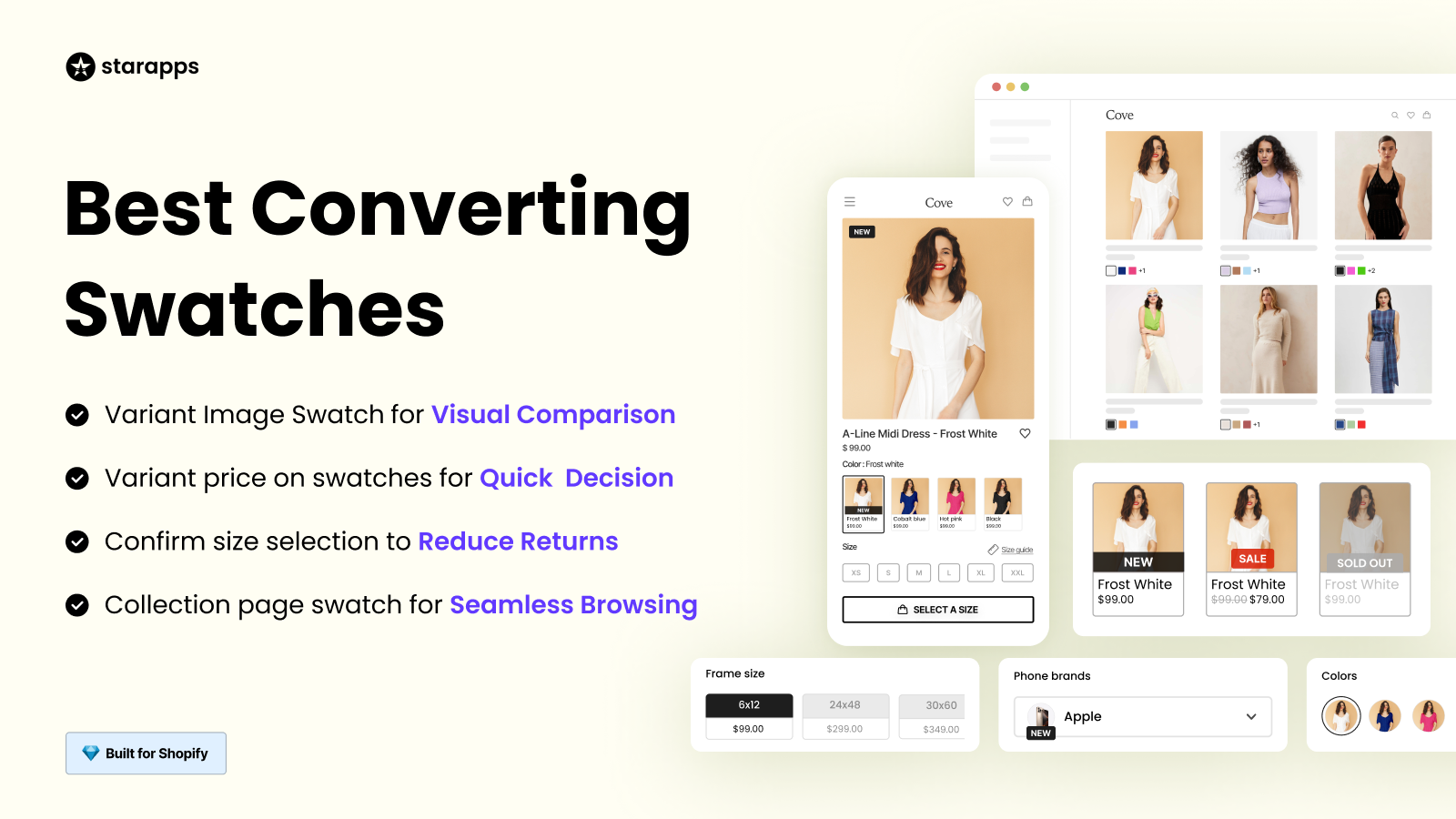
The Color Swatch King helps replace dropdown menus with visual swatches, enabling customers to browse and select product options more intuitively.
Key benefits:
- Display colors, sizes, and styles as clickable swatches or buttons.
- Show variant options directly on collection pages for faster browsing.
- Automatically hide out-of-stock variants to prevent customer frustration and ensure a smooth shopping experience.
- Customize swatch styles to match your brand aesthetic.
- Bulk upload swatches via CSV for stores with extensive catalogs.
- Integrate seamlessly with Shopify Markets, filters, and search functions.
SA Variant Image Automator
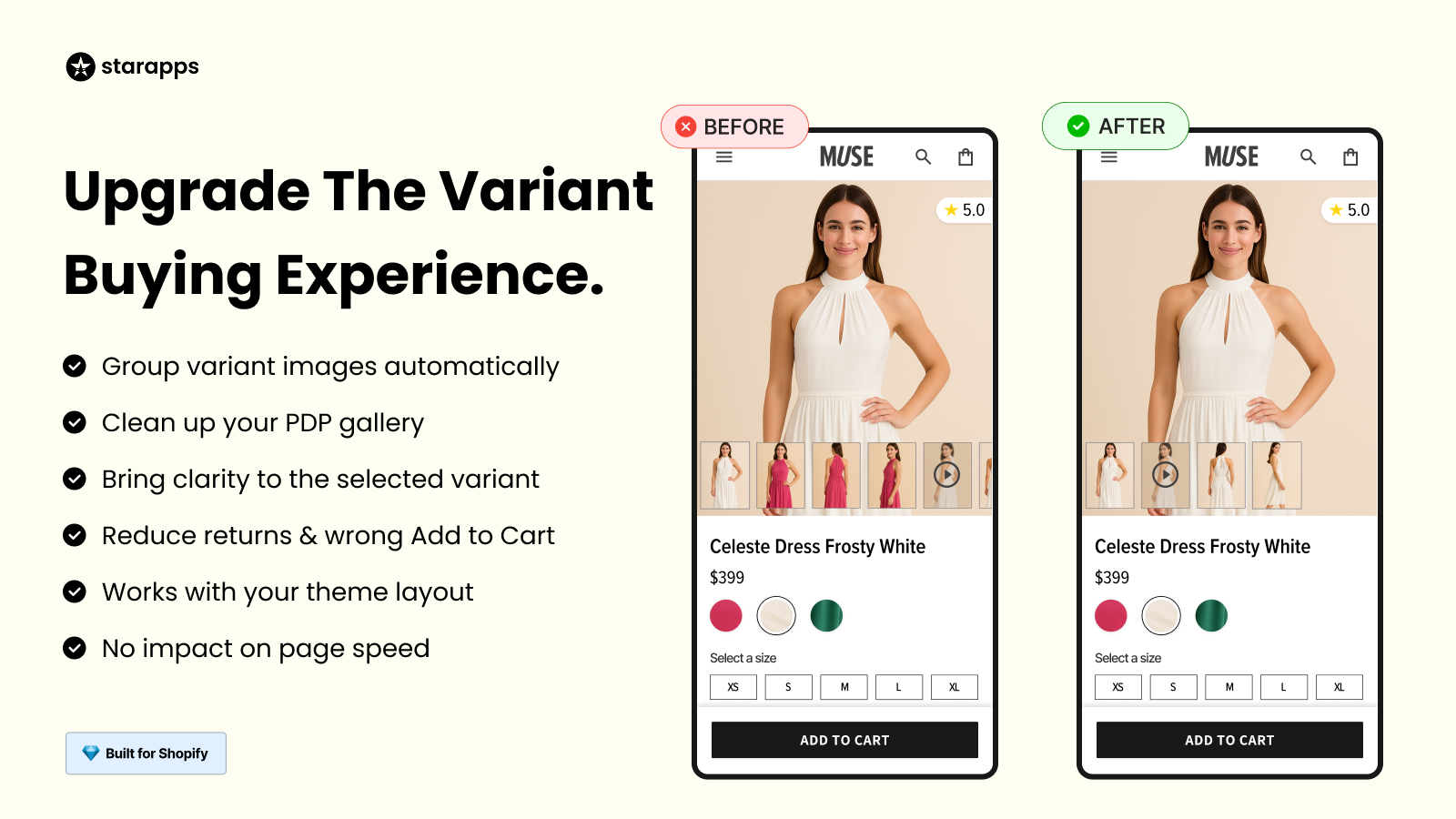
Managing variant images manually eats up hours of your time and often results in incorrect image assignments. This app eliminates that frustration by automatically showing the right product images when customers select different variants. Instead of seeing unrelated photos or manually tagging hundreds of images, you let the app handle everything while maintaining a clean, professional gallery that updates instantly with each selection.
Key benefits:
- Display only relevant images when customers select a color or style.
- Support various media types, including Zoom, video, and 3D views.
- Maintain the existing gallery layout and functionality of your theme.
- Import existing setups from other variant image apps.
- Work with any Shopify theme without affecting site speed.
SA Variants: Combined Listings

Shoppers searching for specific colors or sizes often miss your products because Shopify groups all variants under one listing. This app creates individual listings for each variant on collection pages, making them separate, searchable items in filters and search results.
Key benefits:
- Display all variants separately on collection pages instead of grouping under one product
- Create unique titles, images, URLs, and descriptions for each variant
- Improve SEO by giving search engines more pages to index
- Enable more precise filtering and searching by variant-specific attributes
- Help customers compare options without clicking through multiple pages
- Increase product discoverability through expanded listings
Variant Alt Text King: SEO
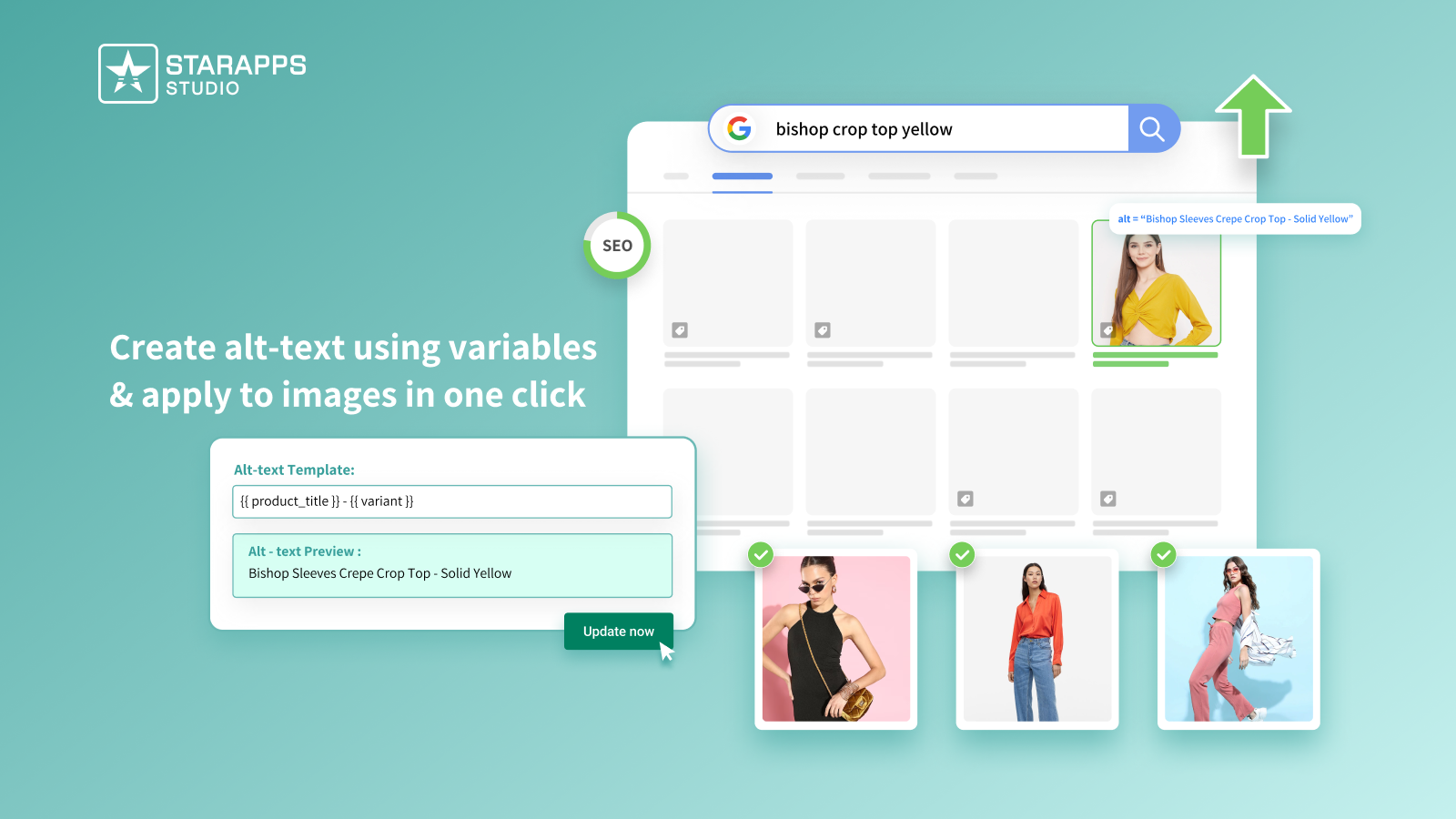
Missing or generic alt text means search engines can't properly understand your product images, and visually impaired customers can't access your content. Variant Alt Text King solves this problem completely by
- Automatically generate optimized alt text for all variant images.
- Daily sync ensures new product images get alt text immediately.
- Customize alt text using product names, variant details, SKUs, and brand names to enhance accessibility.
- Improve Google Image Search visibility.
- Meet ADA and WCAG accessibility standards.
- Boost organic traffic through better image indexing.
Variant Title King: Color, SKU
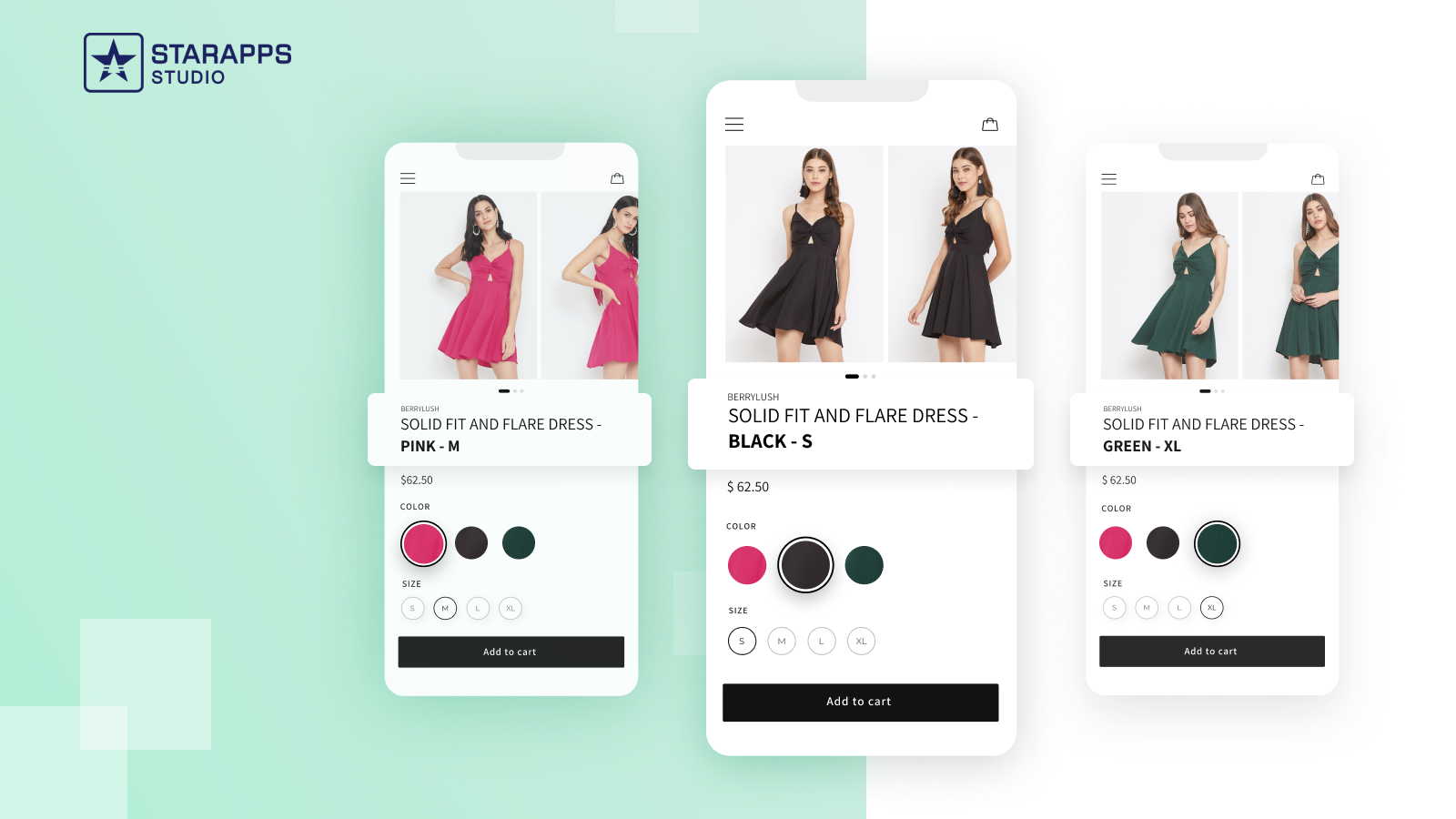
You can update product titles dynamically based on selected variants so customers always know exactly what they're viewing.
Key benefits:
- Automatically update titles to show selected color, size, or style.
- Include SKUs in titles for easier inventory management.
- Add product type and vendor information when relevant.
- Create custom title templates using simple variables.
- Improve clarity on product pages and in shopping carts.
- Works smoothly with all Shopify themes.
Variant Descriptions King
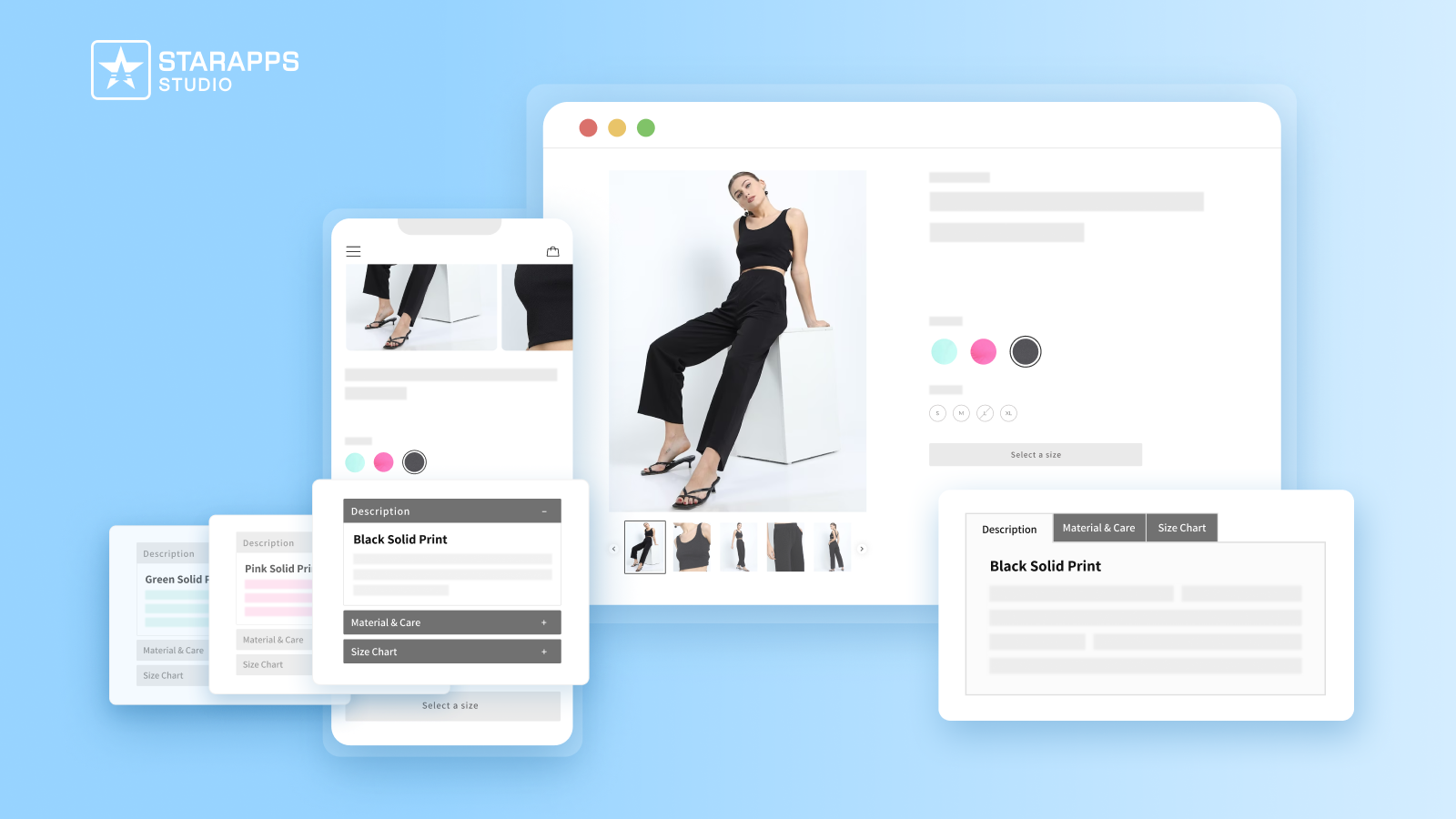
Variant Descriptions: King provides unique descriptions for each variant, offering specific details that vary based on customer selection.
Key benefits:
- Assign different descriptions to each color, size, or product version.
- Organize long content using tabs and accordions to keep pages clean and organized.
- Automatically switch to accordion view on mobile devices.
- Customize designs to match your store's branding.
- Use the same functionality for FAQs, shipping policies, and returns pages.
- Reduce returns by providing variant-specific information.
Overall, StarApps Studio equips Shopify merchants with the tools they need to confidently manage complex catalogs, making their stores more accessible, organized, and user-friendly.
Conclusion
Both Shopify and Shopee solve real problems for online sellers, just in different ways. Your choice shouldn't be about which platform is objectively better, but rather which one aligns with your business goals, target market, and available resources.
For many merchants, the most effective approach is to combine both platforms strategically. Utilize each platform's strengths to complement one another. If your path includes Shopify, consider how variant management tools can streamline operations as your product catalog expands. StarApps Studio's suite of apps addresses specific challenges that growing Shopify stores face, helping you maintain efficiency while delivering better customer experiences.
Visit the Shopify App Store to explore solutions that fit your store's needs.
FAQ’s
1. Is Shopify better than Shopee?
Shopify is better for building a branded store, owning customer data, and reaching global markets, while Shopee excels in quick market access and exposure in Southeast Asia.
2. What cannot be sold on Shopify?
Shopify prohibits illegal products, weapons, drugs, tobacco, prescription medicines, adult content, hazardous materials, and items infringing intellectual property rights. Sellers must comply with local laws and Shopify policies.
3. Who is the Shopee owner?
Shopee is owned by Sea Limited, a Singapore-based internet company founded in 2009, which also operates Garena and SeaMoney.
4. Is Sea a Chinese company?
No, Sea Limited is a Singaporean company, publicly traded and headquartered in Singapore, serving Southeast Asia, Taiwan, Brazil, and other global markets.
5. Can I sell on both Shopify and Shopee at the same time?
Yes, merchants can utilize Shopify for brand-building and Shopee for marketplace exposure, efficiently managing inventory and sales across both platforms to maximize reach and revenue.
Heading
End-to-end traceability
To ensure regulatory compliance, you must have a complete overview of your products from production to shipping. Book a demo to see how Katana can give you full visibility of your operations.


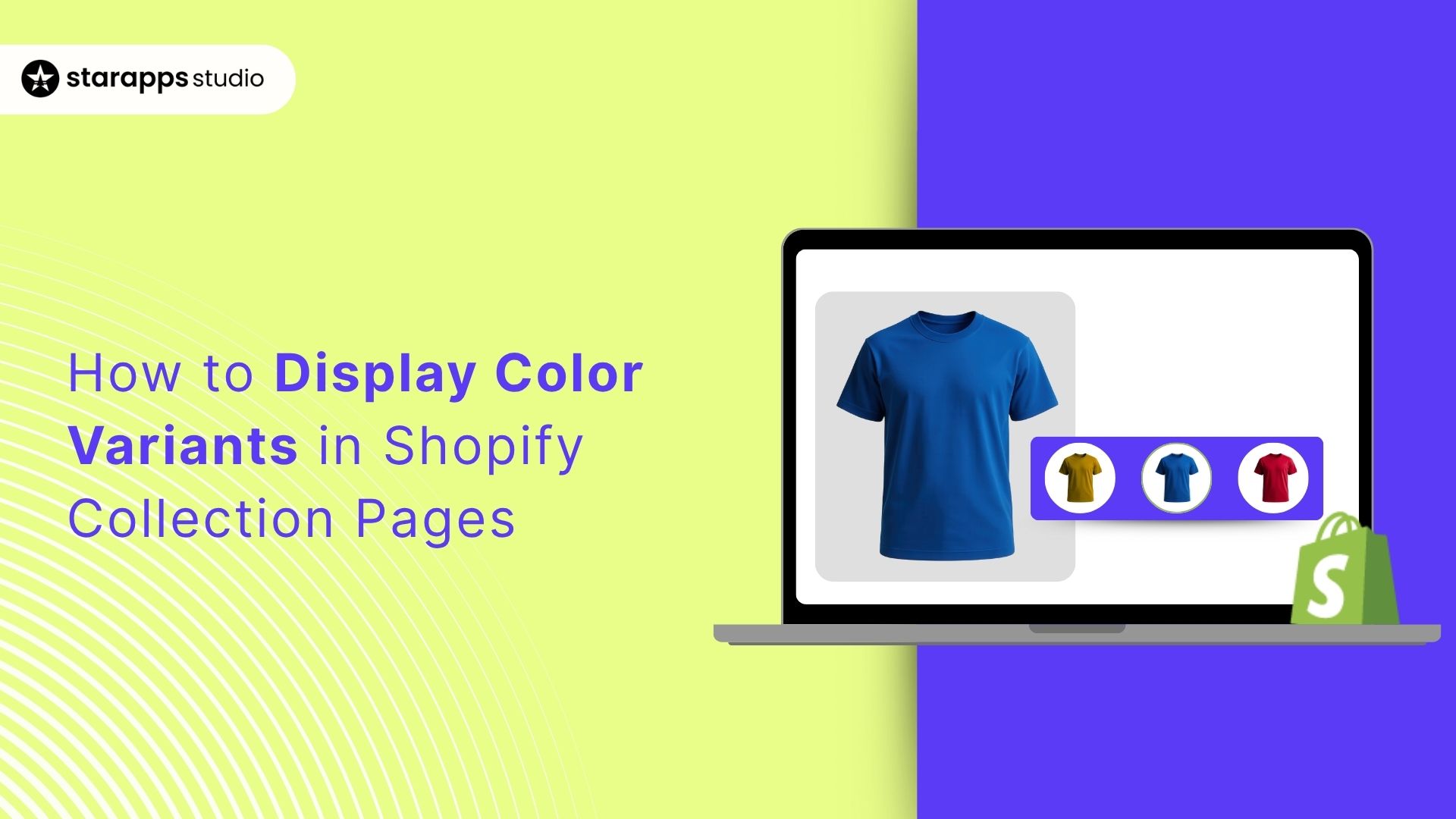

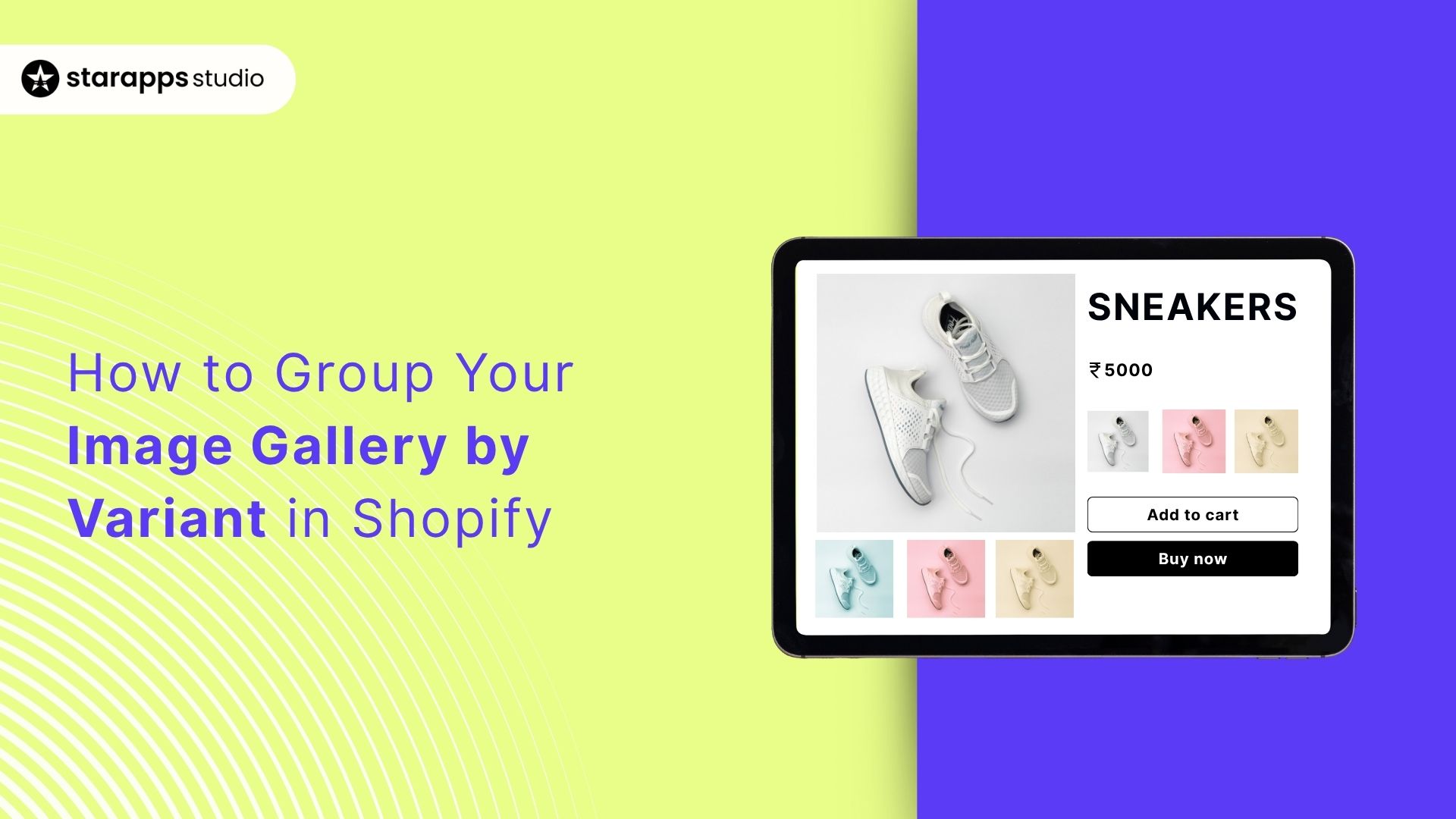
.png)
.png)